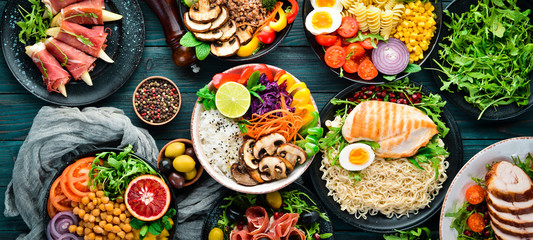Food & Nutrition

Preschoolers are active, spirited tykes. And while they're generally adorable and fun, it's perfectly normal for 3, 4, and 5-year-olds to be opinionated -- especially about eating. BSO offers in this course some advice from the experts on how to avoid preschool food fights?
Out nutritional teachers planned such kind of activities by which all students instructed to Keep junk foods like cookies and candy out of the house to reduce temptation.
The aim of this study is to explore the experiences and meanings that preschool teachers associate with involving food as a tool for learning in planned educational activities.
According to previous studies, food has the potential to play an important part in everyday activities at preschool, both in planned educational activities as well as at meal situations. Our results imply that a holistic understanding of food in preschool is required for long-term work with food as a natural part of the everyday activities
Preschoolers are naturally curious about the world around them and you can tap into that curiosity regarding food by teaching the importance of making healthy eating choices. Simply telling preschoolers why to eat healthy is not sufficient. You must also capture their attention and give them the desire to learn more. Simple and entertaining classroom activities can motivate preschoolers to listen so they can learn about healthy foods.
Where It Grows
A diet based mostly on plant foods, such as fruits and vegetables, is one that involves healthy food choices. Playing a game that helps preschoolers identify where their food grows will help them learn to choose foods that grow, rather than man-made foods like French fries and pizza. Show children pictures of foods growing on trees, on bushes, and in the ground. Play a guessing game after you have shown them all the pictures. Choose a fruit or vegetable and give them clues, such as color, size or shape, and see if they can correctly guess the food, as well as where it grows. Play the game several times to reinforce the concept of eating a plant-based diet.
Classroom Cooking
Children are more likely to eat healthy foods if they have a hand in choosing and preparing them. Simple cooking projects in the classroom can introduce nutrition and healthy food concepts in an engaging way. Make fruit salad by showing preschoolers different fruits and demonstrate how to peel and cut them. Have children segment oranges or peel bananas to help. Preschoolers can make a sandwich by spreading peanut butter on bread or placing cheese and lean ham between two slices. Stirring fruit into plain yogurt or peeling hard boiled eggs are additional ways that preschoolers can help cook. Check with parents to ensure that none of the children have food allergies before bringing food into the classroom.
Shopping
Set up a classroom supermarket by gathering several pictures of foods, using play food or collecting empty boxes and packages. Each preschooler should get a turn to shop for healthy foods. Place only nutritious foods in your store because it will help preschoolers build recognition of what healthy foods look like. Repeat the shopping activity several times so that children continue adding to their knowledge of what kinds of foods they should be eating.
Read Picture Books
Most preschoolers like it when you read to them. There are several picture books that teach about healthy eating and nutrition. Read "Vegetables" and "Fruits," both by teacher to teach preschoolers about the importance of eating plenty of fruits and vegetables.